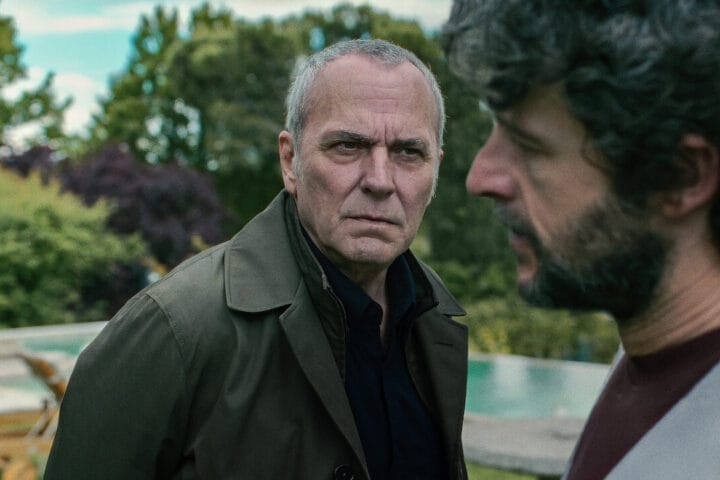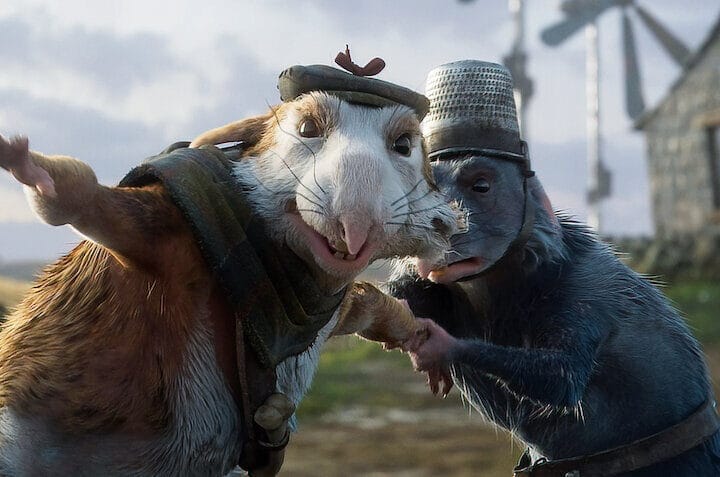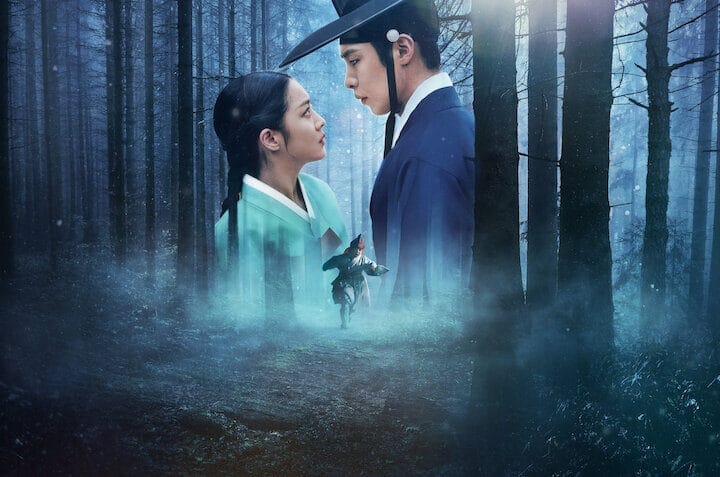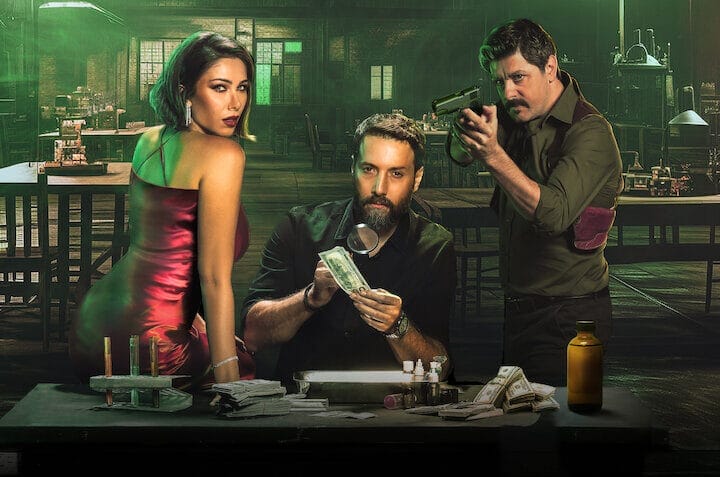Amy Sherman-Palladino and Daniel Palladino, the creative duo behind television phenomena like Gilmore Girls and the multi-award-winning The Marvelous Mrs. Maisel, return to the stage with their highly anticipated new series, Étoile, arriving with its first season comprising eight episodes.
The premise, appropriately dramatic for its setting, centers on two prestigious but troubled ballet companies: the fictional Metropolitan Ballet Theater in New York City and Le Ballet National in Paris. Facing existential threats, their respective directors hatch a bold plan: a transatlantic exchange of their most talented stars, an “ambitious gamble” designed to reignite public interest and save their historic institutions. The title itself, Étoile, the French word for “star,” underscores the focus on these high-caliber, high-pressure performers.
Étoile is a dramedy very much in the Palladino style: a drama centered on the directors of the two ballet companies in a series that combines drama and comedy with complex, eccentric, and relatable characters.
This venture marks a significant evolution for the creators. While they previously explored the world of dance in the beloved but short-lived series Bunheads, Étoile considerably raises the ambition. The shift from a small-town dance school setting to the world-renowned stages of New York and Paris allows for an exploration of institutional pressures, international cultural dynamics, and the pinnacle of artistic achievement—themes distinct from Bunheads‘ focus on youthful potential and mentorship.
Setting the Stage: A Transatlantic Gamble for the Future of Ballet
The narrative catalyst for Étoile is a crisis affecting both fictional companies. They grapple with challenges that mirror those faced by real-world performing arts organizations: dwindling audiences starkly described by Parisian director Geneviève Lavigne as “dead and dying,” declining ticket sales, drops in crucial subsidies, and a worrying exodus of dancers post-COVID-19. Compounding these issues is the fear that younger generations are abandoning traditional art forms like ballet, favoring the ephemeral fame of platforms like TikTok.
Faced with these pressures, Geneviève (Charlotte Gainsbourg) and her New York counterpart, Jack McMillan (Luke Kirby), devise the central “ambitious gamble.” This high-stakes maneuver involves swapping key personnel for a year. The fiery Parisian Cheyenne Toussaint (Lou de Laâge) is sent to New York, while the eccentric American choreographer Tobias Bell (Gideon Glick) heads to Paris, among other exchanges.
The series frames this exchange not merely as an artistic experiment but as an “elaborately choreographed publicity stunt,” a “marketing hook” aimed directly at generating media attention and luring younger patrons back to the theater.
Unlike the government-backed cultural diplomacy of historical Cold War ballet exchanges, the Étoile exchange is financed by a wealthy industrialist, Crispin Shamblee (Simon Callow), who is simultaneously trying to manage the fallout from his company’s oil spill.
Once again, industry and the need for money clash with artistic creative concerns.
The Creative Force: Dialogue Masters Meet Dance
Amy Sherman-Palladino and Daniel Palladino bring a distinctive authorial voice to Étoile, honed over decades on acclaimed series like Roseanne, Gilmore Girls, Bunheads, and The Marvelous Mrs. Maisel. Their signature includes dialogue famous for its rapid-fire pace and pop culture references alongside complex, often neurotic yet captivating characters, a skillful blend of screwball comedy and poignant drama, and the creation of richly detailed, specific worlds.
For Amy Sherman-Palladino, Étoile holds a particularly personal resonance. A former dancer herself, she faced a pivotal choice early in her career between a writing job on Roseanne and a second audition for the musical Cats. Her experience permeates the project; she speaks of dance as something that “if you love it, you never don’t love it” and describes the show as a “love letter” to the career she didn’t take, a way to vicariously experience the world that also captivated her dancer mother.
This project also revisits territory explored in Bunheads, their 2012-2013 series set in a small-town ballet school. Étoile, however, elevates the setting to the pinnacle of the professional dance world. Daniel Palladino noted that they felt “unfinished business with Bunheads,” and Étoile provides the opportunity “to show what happens when you reach the highest status.”
A defining characteristic of the Palladinos’ productions is their loyalty to actors, often creating what feels like a repertory company across their various series. Étoile features prominent roles for Maisel alums Luke Kirby and Gideon Glick, as well as recurring roles for Gilmore Girls veterans Yanic Truesdale and Kelly Bishop. This loyalty extends behind the scenes, with Maisel crew members returning, and even dancers who appeared as teenagers in Bunheads now performing in Étoile.
This deep personal connection Amy Sherman-Palladino has to dance appears to be a driving force behind the series’ commitment to authenticity. The creators have expressed a desire to paint a “realistic picture of the ballet world,” deliberately avoiding the sensationalized “glass in the pointe shoes” tropes common in other depictions. This commitment is reflected in the casting of numerous professional ballet dancers from top companies in both ensemble and speaking roles.
Furthermore, the practice of consistently working with the same actors likely fosters a unique performance dynamic. Given the demanding nature of the Palladinos’ signature dialogue, repeatedly collaborating with actors who understand their specific rhythms and requirements likely streamlines production and ensures stylistic consistency. This “Palladino Repertory Company” reinforces their brand and builds audience loyalty through familiar faces, with actors like Luke Kirby being specifically sought out to anchor new projects.
Key Figures On and Off Stage
Étoile boasts a large international cast, navigating the complexities of the transatlantic exchange. Leading the ensemble are:
Luke Kirby as Jack McMillan: Fresh off his Emmy-winning role as Lenny Bruce in The Marvelous Mrs. Maisel, Kirby plays the director of the Metropolitan Ballet Theater in New York City. Described as pragmatic and perhaps world-weary, Jack comes from a family of ballet patrons, giving him personal stakes in the company’s survival. He shares a complicated history and a dynamic, sparring relationship with star dancer Cheyenne, and his witty exchanges with his Parisian counterpart Geneviève are noted as highlights. The role was specifically developed with Kirby in mind.
Charlotte Gainsbourg as Geneviève Lavigne: The acclaimed French actress and musician takes on the role of the interim director of Le Ballet National in Paris. Gainsbourg stepped into the role after Camille Cottin withdrew due to scheduling conflicts.
Lou de Laâge as Cheyenne Toussaint: Playing the Parisian sent to New York, de Laâge embodies a character described as “controversial,” “brash,” “fiery,” and “temperamental.” While immensely talented, she is considered a “nightmare to work with,” and her arrival threatens to disrupt the New York company. However, beneath the “diva persona,” the character possesses emotional depth and pain. Although not a professional dancer, de Laâge underwent significant training for the role.
Gideon Glick as Tobias Bell: Another Maisel veteran, Glick portrays the “eccentric” and “peculiar” American choreographer assigned to Paris. His character is brilliant and abstracted in his own world. Like Cheyenne, his arc promises to reveal emotional nuances beneath the eccentric exterior.
Supporting these protagonists is a rich ensemble cast, crucial for depicting the bustling life of two major ballet companies. The interaction between these characters—the transatlantic management styles of Jack and Geneviève, Cheyenne’s cultural clash and artistic confrontations in New York, Tobias’s bewildered attempts to create in Paris, and Mishi’s struggle with identity and family pressure—forms the dramatic and comedic core of the series.
Bringing Ballet to the Screen: Production and Authenticity
Filmed on location in both New York City (including Lincoln Center) and Paris, Étoile aims for a visually rich and authentic portrayal of its dual settings. The production faced significant logistical challenges, coordinating schedules and access to prestigious venues like Lincoln Center and Parisian theaters.
A key element of the show’s bid for authenticity lies in its casting of professional dancers. The Palladinos and their team, including choreographer Marguerite Derricks (who also serves as a producer), recruited dancers from top American and European companies to form the fictional troupes. This includes dancers with speaking roles, such as NYCB principal Unity Phelan and former NYCB principal Robbie Fairchild (playing principals Julie and Larry, respectively), Taïs Vinolo (Mishi), and dancers from companies like Dance Theatre of Harlem and Joffrey Ballet. Fairchild noted the therapeutic aspect of returning to the ballet world on film after pursuing acting, partly as a response to seeing non-dancers tackle dance roles elsewhere.
This commitment extended to the choreography itself. Derricks, known for her work in film and television, created original pieces for the show, particularly for Gideon Glick’s choreographer character, Tobias, working closely with Glick to embody the role. Renowned contemporary ballet choreographer Christopher Wheeldon was also brought in for several sequences, with Sherman-Palladino noting that his style felt similar to the flow of her dialogue: “fluid and continuous.” The series features excerpts from classic ballets like Romeo and Juliet (using licensed choreography from the Sir Kenneth MacMillan estate), Balanchine’s Rubies (via The George Balanchine Foundation), Giselle, Swan Lake, and Sylvia, all chosen specifically to advance the plot or illuminate character. Derricks hinted at humorous takes on classics, suggesting her Swan Lake would be unconventional.
The show directly addresses the often-complicated issue of dance doubles. While lead actors Lou de Laâge (Cheyenne) and Ivan du Pontavice (Gabin) trained extensively, they still required doubles for complex sequences. Rather than hiding this, the production gave the doubles—Arcadian Broad and Constance Devernay—their own named characters and dialogue in the show, allowing them visibility and acknowledging their contribution. This approach reflects the desire to “celebrate [the dance community] for what it is” and grant them “ownership” of the piece.
Filming presented unique challenges for the dancers, requiring stamina and patience during long waits on set, quite different from the rhythms of stage performance.
The integration of dance is not merely aesthetic; the creators emphasize using dance “for story,” showing “what’s at stake” and allowing characters to “speak with their bodies.” The physical demands and inherent risks of ballet—the potential career-ending injury from one wrong move—are central to the narrative. The show aims to depict the paradox of ballet: pushing the body to its limits to achieve elegance and apparent effortlessness, a dedication Kirby describes as “close to madness.”
Comedy, Drama, and Culture Clash
Étoile navigates a complex tonal landscape, blending the Palladinos’ signature screwball comedy energy with the workplace drama and specific pressures of the ballet world. The series promises the familiar witty, fast-paced banter, temperamental artists, and shrewd female characters that define their previous work. Comparisons are drawn to high-energy workplace dramedies like Sports Night and Mozart in the Jungle.
A significant thematic element is the culture clash inherent in the transatlantic exchange. The show contrasts the established traditions of Parisian ballet, with roots stretching back centuries, against the “young upstart” nature of American ballet. Characters experience culture shock, from navigating different artistic temperaments to mundane frustrations like replicating toiletries.
The series delves into the intense dedication required for ballet, portraying it as both a glamorous art form and grueling work.
However, the tone is not without potential friction. The portrayal of billionaire backer Crispin Shamblee as a “lovable rogue” despite his background in environmentally destructive industries and potential war crimes struck some initial viewers as simplistic or tonally awkward.
The show seems less interested in critiquing potential exploitation within ballet, focusing instead on the “fast-talking whimsy and elegant direction.” There is also the challenge of balancing the Palladinos’ characteristic quirkiness, which can sometimes veer into caricature, with the need for emotional depth, though characters like Cheyenne and Tobias reportedly evolve beyond their initial eccentricities.
Our Take
A realistic portrayal of the ballet world? Étoile is a bold yet eccentric series built around comedy and eccentric, exaggerated, and very often comical characters: don’t expect the neorealism they advertise, because the series is more cinematic than realistic.
That said, there’s nothing wrong with the adjective “cinematic”—quite the opposite. Étoile is lively, joyful, and conveys rhythm and, above all, artistic passion to the viewer.
Good performances in characters that are fun to play, and a delightful comedy coupled with an accurate, slightly sarcastic portrait of the artistic world.
Enjoy it.
Where to Watch “Étoile”









